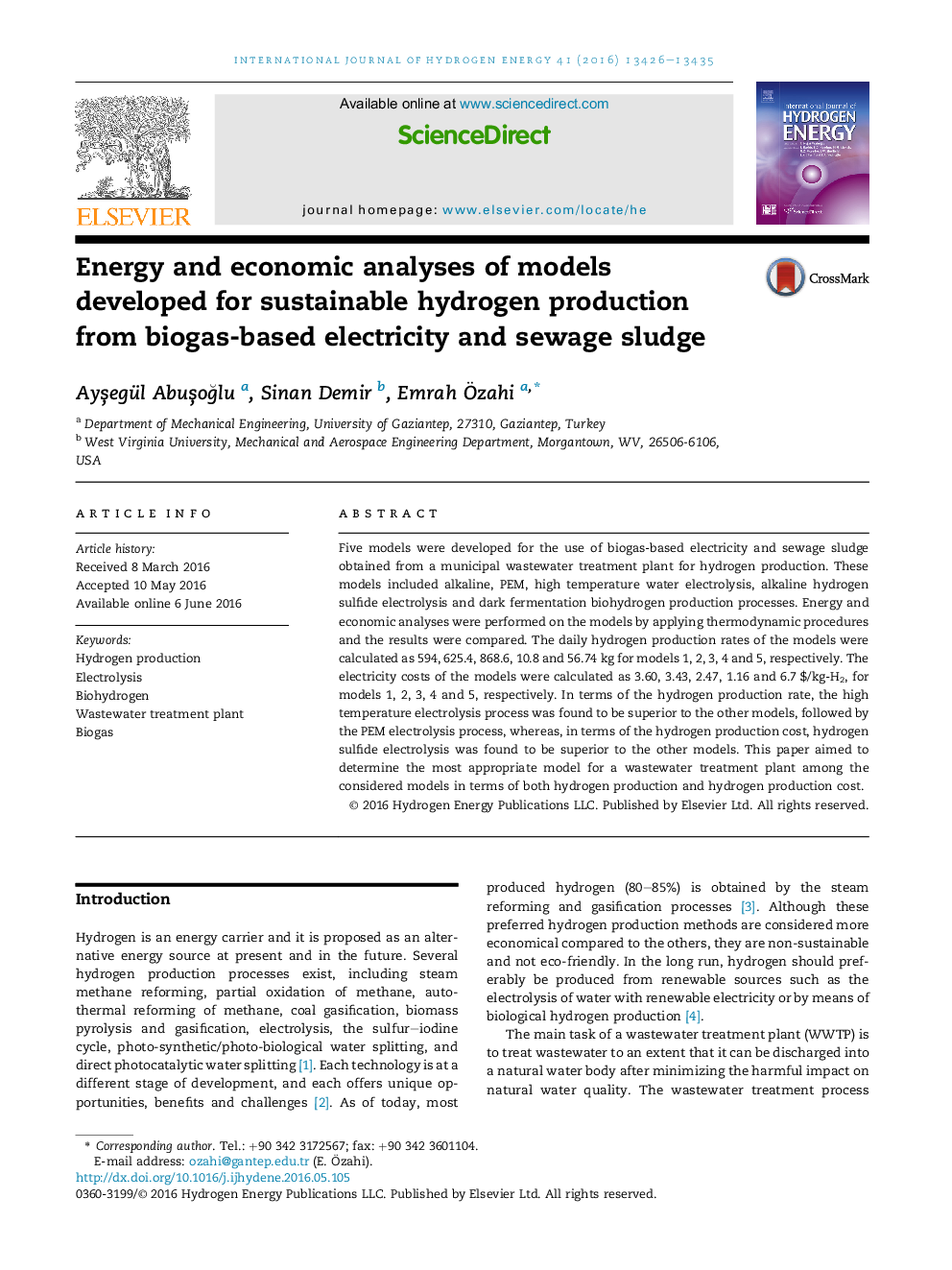| Article ID | Journal | Published Year | Pages | File Type |
|---|---|---|---|---|
| 1276456 | International Journal of Hydrogen Energy | 2016 | 10 Pages |
•Five models were developed for biogas-based electricity and sewage sludge for hydrogen production.•Energy and economic analyses were performed on the models.•The most appropriate model for a wastewater treatment plant is proposed.
Five models were developed for the use of biogas-based electricity and sewage sludge obtained from a municipal wastewater treatment plant for hydrogen production. These models included alkaline, PEM, high temperature water electrolysis, alkaline hydrogen sulfide electrolysis and dark fermentation biohydrogen production processes. Energy and economic analyses were performed on the models by applying thermodynamic procedures and the results were compared. The daily hydrogen production rates of the models were calculated as 594, 625.4, 868.6, 10.8 and 56.74 kg for models 1, 2, 3, 4 and 5, respectively. The electricity costs of the models were calculated as 3.60, 3.43, 2.47, 1.16 and 6.7 $/kg-H2, for models 1, 2, 3, 4 and 5, respectively. In terms of the hydrogen production rate, the high temperature electrolysis process was found to be superior to the other models, followed by the PEM electrolysis process, whereas, in terms of the hydrogen production cost, hydrogen sulfide electrolysis was found to be superior to the other models. This paper aimed to determine the most appropriate model for a wastewater treatment plant among the considered models in terms of both hydrogen production and hydrogen production cost.
